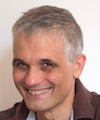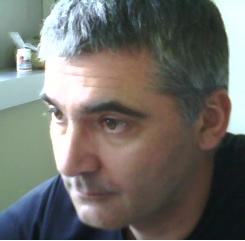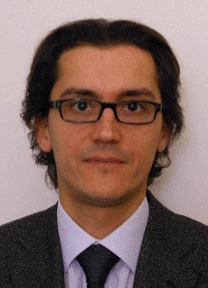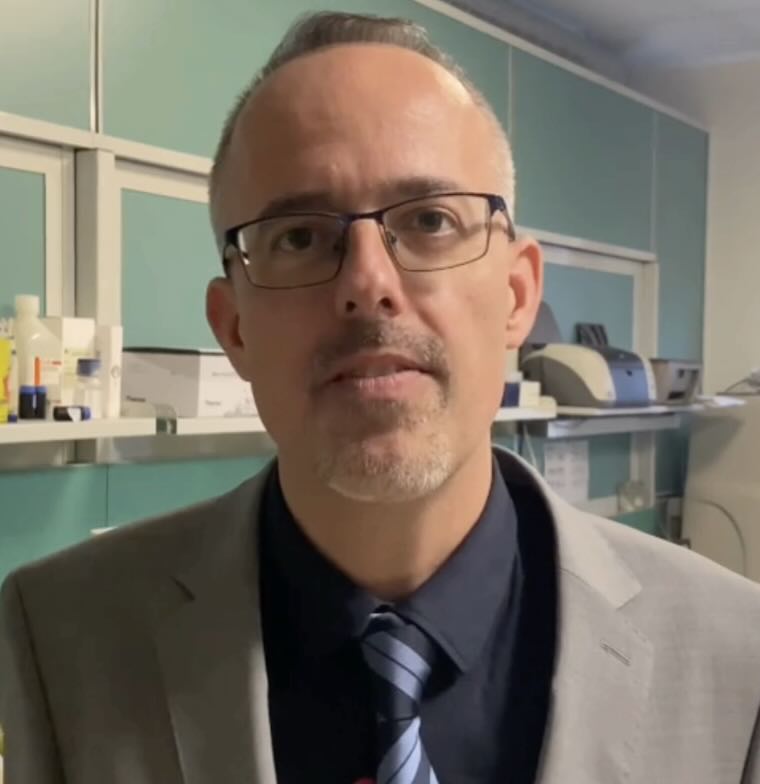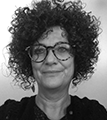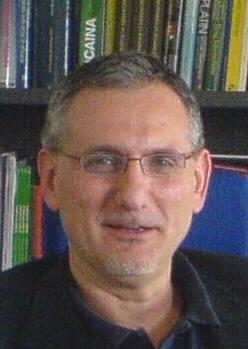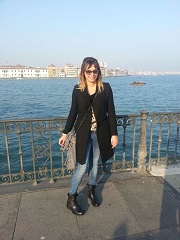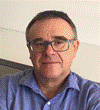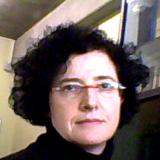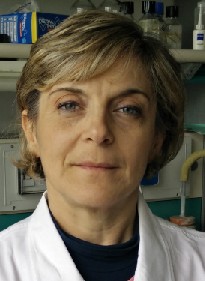Studying at the University of Verona
Here you can find information on the organisational aspects of the Programme, lecture timetables, learning activities and useful contact details for your time at the University, from enrolment to graduation.
Academic calendar
The academic calendar shows the deadlines and scheduled events that are relevant to students, teaching and technical-administrative staff of the University. Public holidays and University closures are also indicated. The academic year normally begins on 1 October each year and ends on 30 September of the following year.
Course calendar
The Academic Calendar sets out the degree programme lecture and exam timetables, as well as the relevant university closure dates..
| Period | From | To |
|---|---|---|
| INF TN - 2° anno 1° sem | Oct 2, 2017 | Dec 12, 2017 |
| INF TN - 1° anno 1° sem | Oct 9, 2017 | Dec 19, 2017 |
| INF TN - 3° anno 1° sem | Oct 16, 2017 | Dec 19, 2017 |
| INF TN - 1° anno 2° sem | Feb 1, 2018 | Apr 11, 2018 |
| INF TN - 3° anno 2° sem | Feb 1, 2018 | Mar 27, 2018 |
| INF TN - 2° anno 2° sem | May 2, 2018 | Jun 22, 2018 |
| Session | From | To |
|---|---|---|
| INF TN- sessione invernale 2 anno (1 parte) | Dec 18, 2017 | Dec 21, 2017 |
| INF TN- sessione invernale 1 anno | Jan 8, 2018 | Jan 31, 2018 |
| INF TN- sessione invernale 2 anno (2 parte | Jan 8, 2018 | Jan 24, 2018 |
| INF TN- sessione invernale 3 anno | Jan 8, 2018 | Jan 31, 2018 |
| INF TN- sessione estiva 3 anno (1 parte) | Apr 11, 2018 | Apr 24, 2018 |
| INF TN- sessione estiva 1 anno (1 parte) | Apr 16, 2018 | Apr 27, 2018 |
| INF TN- sessione estiva 2 anno | Jul 4, 2018 | Jul 31, 2018 |
| INF TN- sessione estiva 1 anno (2 parte) | Jul 16, 2018 | Jul 31, 2018 |
| INF TN- sessione estiva 3 anno (2 parte) | Jul 18, 2018 | Jul 31, 2018 |
| INF TN- sessione autunnale 2 anno | Sep 6, 2018 | Sep 27, 2018 |
| INF TN- sessione autunnale 3 anno | Sep 6, 2018 | Sep 27, 2018 |
| INF TN- sessione autunnale 1 anno | Sep 10, 2018 | Sep 28, 2018 |
| Session | From | To |
|---|---|---|
| 1^ SESSIONE | Oct 1, 2018 | Nov 30, 2018 |
| 2^ SESSIONE | Mar 1, 2019 | Apr 30, 2019 |
| Period | From | To |
|---|---|---|
| All Saints Day | Nov 1, 2017 | Nov 1, 2017 |
| Festa Immacolata Concezione | Dec 8, 2017 | Dec 8, 2017 |
| Vacanze natalizie | Dec 22, 2017 | Jan 7, 2018 |
| Easter break | Mar 30, 2018 | Apr 3, 2018 |
| Liberation Day | Apr 25, 2018 | Apr 25, 2018 |
| Republic Day | Jun 2, 2018 | Jun 2, 2018 |
| Description | Period | From | To |
|---|---|---|---|
| INF TN 2° anno 1^ esp | INF TN 2° anno 1^ esp | Jan 25, 2018 | Mar 6, 2018 |
| INF TN 2° anno 2^ esp | INF TN 2° anno 2^ esp | Mar 12, 2018 | Apr 20, 2018 |
| INF TN 3° anno 1^ esp | INF TN 3° anno 1^ esp | Apr 26, 2018 | Jun 5, 2018 |
| INF TN 1° anno 1^ esp | INF TN 1° anno 1^ esp | May 2, 2018 | Jun 5, 2018 |
| INF TN 1° anno 2^ esp | INF TN 1° anno 2^ esp | Jun 11, 2018 | Jul 13, 2018 |
| INF TN 3° anno 2^ esp | INF TN 3° anno 2^ esp | Jun 11, 2018 | Jul 17, 2018 |
| INF TN 2° anno 3^ esp | INF TN 2° anno 3^ esp | Sep 3, 2018 | Oct 12, 2018 |
| INF TN 3° anno 3^ esp | INF TN 3° anno 3^ esp | Sep 3, 2018 | Oct 18, 2018 |
Exam calendar
Exam dates and rounds are managed by the relevant Medicine Teaching and Student Services Unit.
To view all the exam sessions available, please use the Exam dashboard on ESSE3.
If you forgot your login details or have problems logging in, please contact the relevant IT HelpDesk, or check the login details recovery web page.
Academic staff
 borghesi.a@mail.apss.tn.it
borghesi.a@mail.apss.tn.it
 elena.bravi@apss.tn.it
elena.bravi@apss.tn.it
 cembrani@apss.tn.it
cembrani@apss.tn.it
 dellai@tn.apss.tn.it
dellai@tn.apss.tn.it
 tullio.ferrari@univr.it
tullio.ferrari@univr.it
 franco.fraccaroli@unitn.it
franco.fraccaroli@unitn.it
 alessandra.magotti@tin.it
alessandra.magotti@tin.it
 loredana.pancheri@univr.it
loredana.pancheri@univr.it
Zadra Tania
Study Plan
The Study Plan includes all modules, teaching and learning activities that each student will need to undertake during their time at the University.
Please select your Study Plan based on your enrollment year.
1° Year
| Modules | Credits | TAF | SSD |
|---|
Professional Laboratories (1st year)
2° Year activated in the A.Y. 2018/2019
| Modules | Credits | TAF | SSD |
|---|
Professional Laboratories (2nd year)
3° Year activated in the A.Y. 2019/2020
| Modules | Credits | TAF | SSD |
|---|
Professional Laboratories (3rd year)
| Modules | Credits | TAF | SSD |
|---|
Professional Laboratories (1st year)
| Modules | Credits | TAF | SSD |
|---|
Professional Laboratories (2nd year)
| Modules | Credits | TAF | SSD |
|---|
Professional Laboratories (3rd year)
Legend | Type of training activity (TTA)
TAF (Type of Educational Activity) All courses and activities are classified into different types of educational activities, indicated by a letter.
Morphological and functional fundamentals of life - FISIOLOGIA (2017/2018)
Teaching code
4S000039
Teacher
Credits
3
Language
Italian
Scientific Disciplinary Sector (SSD)
BIO/09 - PHYSIOLOGY
Period
INF TN - 1° anno 1° sem dal Oct 9, 2017 al Dec 19, 2017.
Location
TRENTO
Learning outcomes
The Human Physiology Course wants to provide basic knowledge of the functioning of tissues and organs of the human body. The main objective is to learn the functioning of the human body as a distributed set of different organs, organized in reciprocally interacting systems. At the end of the course, the student, in addition to the basic physiology notions, will be able to reason on the integration between cardiovascular, pulmonary, renal and digestive systems in managing the exchanges between the external environment and the internal environment and the homeostasis of the internal environment. By the end of the course students should be able to apply the new knowledge and analytical skills to the physiology of healthy subjects but also to pathology.
Program
1. Cell physiology
1.1. Composition and biophysical characteristics of the cell membrane.
1.2. Passive and active transport. Osmosis.
2. The physiology of excitable and contractile tissues
2.1. Resting potential and action potential. Absolute and relative refractory periods. Propagation of the action potential. Graded potentials.
2.2. Classification of nerve fibers.
2.3. Chemical Synapses. Post-synaptic excitatory and inhibitory potentials. Spatial and temporal integration of postsynaptic potentials.
2.4. Electro-mechanical coupling in skeletal muscle. The cardiac action potential. Smooth muscle.
2.5. Contractile proteins.
3. Central and peripheral nervous system
3.1. Functional organization of the central nervous system.
3.2. Spinal reflexes.
3.3. Functions of the autonomic nervous system.
3.4. Brainstem and hypothalamus.
3.5. Voluntary movement.
3.6. Cerebellum and basal ganglia.
3.7. Sleep and wake.
3.8. Language.
3.9. Somatic sensitivity and pain.
4. Cardiovascular system
4.1. Generation and conduction of excitement. Cardiac pacemaker. Baroreceptors.
4.2. Intrinsic and extrinsic regulation of cardiac function: Frank-Starling mechanism: preload, afterload and contractility. Heart rate, stroke volume and cardiac output.
4.2. Basic elements of hydrostatics and hydrodynamics: pressure, flow, strength and viscosity. Poiseuille’s Law. Laminar and turbulent flow. Laplace’s law.
4.3. Arteries, capillaries and veins. Transcapillary exchanges. Venous circulation. Central and peripheral arterial pulse; Origin and propagation of the pulse wave.
4.4. Blood pressure regulation. Short-term and long-term blood pressure regulation: baroreceptors, kidney-fluid system, renin-angiotensin-aldosterone system.
4.5. Venous return and factors that influence it. Pulmonary hemodynamics.
5. Respiratory system
5.1. Respiratory Mechanics. Intrathoracic and intra-pulmonary pressure and their variations during breathing.
5.2. Pulmonary volumes and capacities: definitions and measurements.
5.3. Physics laws of gasses. Inhaled, exhaled and alveolar air and partial gas pressures. Anatomical and physiological dead space. Pulmonary and alveolar ventilation. Dissension of gases between the lungs and the blood. Oxygen transport.
5.4. Oxygen saturation curve of hemoglobin. Influence of pCO2, pH and temperature. Quantitative aspects of oxygen transport in the blood. Carbon dioxide transport.
5.5. Nervous and chemical respiratory control: brainstem respiratory centers, peripheral and central chemoreceptors.
6. Renal system
6.1. The nephron unit: glomerulus and tubule.
6.2. Renal circulation.
6.3. Filtration process. Composition of the ultrafiltrate. Reabsorption and secretion mechanisms. Renal clearance. Tubular glucose reabsorption. Sodium reabsorption. Water reabsorption.
6.4. Concentration and dilution of urine. Hormonal control of renal function: ADH, aldosterone, renin
6.5. Renal role in Acid-Base Equilibrium.
6.6. Micturition.
6.7. Integrated control mechanisms of the volume and the osmolality of extracellular fluid.
7. Digestive system
7.1. Saliva secretion. Chewing and swallowing.
7.2. Gastric filling and emptying. Gastric secretion: gastric mucosa glands; Composition and functions of gastric juice. Nervous and humoral control of motility and gastric secretion. The vomit reflex.
7.3. Pancreatic exocrine secretion and bile secretion. Nervous and humoral control of pancreatic secretion. Composition, nervous and humoral control of biliary secretion.
7.4. Nervous and hormonal control of intestinal movements and secretion.
7.5. Defecation.
7.6. Intestinal absorption of carbohydrates, proteins, lipids, vitamins, water and electrolytess.
7.7. Short-term and long-term nervous control of appetite.
8. Endocrine System
8.1. The hypothalamus-pituitary-gland endocrine glands.
8.2. Stress hormones: cortisol and catecholamines
8.3. Lactation hormones: prolactin and oxytocin
8.4. Sex hormones
8.5. Hormones in the short and long term metabolic control: insulin, glucagon, thyroid hormones and GH.
8.6. Homeostasis of body calcium: parathormone, calcitonin and vitamin D.
| Author | Title | Publishing house | Year | ISBN | Notes |
|---|---|---|---|---|---|
| Stanfield CL | Fisiologia (Edizione 5) | EdiSES | 2017 | 9788879599726 | |
| Widmaier E.P., Raff H., Strang K.T. | Vander Fisiologia (Edizione 2) | Ambrosiana | 2018 | 9788808280022 |
Examination Methods
The exam is written. It is carried out together with the evaluation tests of the other two modules of the integrated course (that is, anatomy and histology). The physiology test consists of 40 multiple choice questions, with 5 possible answers. Sufficiency is evaluated on the total of the correct answers in the three modules (anatomy, histology and physiology) and not on the single physiology module. The place of examination is the University Polo in Trento.
Career prospects
Module/Programme news
News for students
There you will find information, resources and services useful during your time at the University (Student’s exam record, your study plan on ESSE3, Distance Learning courses, university email account, office forms, administrative procedures, etc.). You can log into MyUnivr with your GIA login details: only in this way will you be able to receive notification of all the notices from your teachers and your secretariat via email and also via the Univr app.
Gestione carriere
Orario lezioni
Documents
| Title | Info File |
|---|---|
|
|
pdf, it, 464 KB, 17/09/24 |
|
|
pdf, it, 628 KB, 08/07/24 |
|
|
pdf, it, 58 KB, 08/07/24 |
|
|
pdf, it, 1459 KB, 09/09/24 |
Guida ai programmi degli insegnamenti
La Guida ai programmi degli insegnamenti in allegato è uno strumento di sintesi e orientamento per lo studente, creato da un gruppo di lavoro interno alla Commissione didattica del CdS.
Per tutte le attvità previste dal piano di studi sono descritte: le finalità, i contenuti e integrazioni, learning outcome, i metodi di insegnamento e valutazione e bilbliografia essenziale
Documents
| Title | Info File |
|---|---|
|
|
pdf, it, 1581 KB, 11/07/24 |
Graduation
Documents
| Title | Info File |
|---|---|
|
|
pdf, it, 1487 KB, 20/08/24 |
Linee guida per riconoscimento cfu
Lo studente che intende chiedere il riconoscimento di moduli o insegnamenti pregressi dovrà presentare domanda, entro il 30 novembre dell’anno accademico in corso, seguendo le indicazioni indicate al link seguente: https://www.univr.it/it/i-nostri-servizi/segreterie-studenti/gestione-carriere-studenti-medicina-e-chirurgia/riconoscimento-crediti-acquisiti-da-una-carriera-pregressa-medicina
Documents
| Title | Info File |
|---|---|
|
|
pdf, it, 295 KB, 09/11/21 |
Student login and resources
Appelli d'esame
Appelli d'esame
Documents
| Title | Info File |
|---|---|
|
|
pdf, it, 554 KB, 30/07/24 |
|
|
pdf, it, 443 KB, 24/07/24 |
|
|
pdf, it, 445 KB, 30/07/24 |
|
|
pdf, it, 2762 KB, 15/12/22 |
Tirocinio Professionalizzante
Finalità del Tirocinio
Nel corso dei 3 anni di laurea le attività teoriche sono alternate con esperienze di tirocinio, che permettono agli studenti di sviluppare ed esercitare in sicurezza le abilità cliniche previste, sviluppare professionalità e prepararsi ad entrare nel mondo del lavoro come infermieri. Tali esperienze sono realizzate in strutture sanitarie ospedaliere, territoriali e socio assistenziali convenzionate con l’Università sulla base dell’accertamento della qualità dell’offerta formativa, oltre che dell’adeguatezza strutturale e della dotazione di personale.
Nel corso del triennio dunque, lo studente può apprendere in contesti di tirocinio diversificati, in ospedali e strutture per acuti, in aree medico-chirurgiche, di specialità, per adulti e pediatriche, in aree di emergenza e terapie intensive, a domicilio di pazienti e famiglie, presso ambulatori infermieristici di comunità, Case (Ospedali) di comunità o Residenze sanitarie assistenziali (RSA), in contesti di lungodegenza o Centri di riabilitazione. Durante il tirocinio lo studente può sperimentarsi in modo attivo, apprendere in sicurezza e sviluppare le competenze professionali previste, affiancato da uno più infermieri esperti con funzione di Guida/supervisore. Può avvalersi anche del supporto di tutor professionali facenti parte del team del Corso di studio (CdS). I tutor sono professionisti con specifiche competenze cliniche e pedagogiche finalizzate ad attivare e sostenere i processi di apprendimento dall’esperienza.
Il Piano di Studio prevede per le attività formative professionalizzanti e di tirocinio, 60 CFU articolati in:
- esperienze guidate nei contesti di tirocinio;
- sessioni tutoriali di preparazione e guida/elaborazione degli apprendimenti;
- esercitazioni e simulazioni, in cui lo studente sviluppa abilità assistenziali, gestuali, comunicative/relazionali e metodologiche in situazione protetta, prima o durante la sperimentazione nel contesto reale;
- elaborazioni scritte su mandati specifici e sessioni di studio guidato.
Pianificazione del tirocinio
L’impegno per lo studente è progressivo nei 3 anni di corso: al 1° anno sono previste esperienze per un totale di 16 CFU; al 2° anno 20 CFU; al 3° anno 24 CFU. Ogni esperienza di tirocinio ha una durata variabile tra 5 e/o 8 settimane. Di seguito si rappresenta un esempio di alternanza delle diverse attività formative nel triennio.
|
1° anno |
|
|
|
|
|
|
|
|
|
|||||||||||||||||||||||||
|
TEORIA |
LABORATORI |
ESAMI |
TEORIA |
LABORATORI |
TIROCINIO |
ESAMI |
|
|
||||||||||||||||||||||||||
|
|
|
|
|
|
|
|
|
|
||||||||||||||||||||||||||
|
2° anno |
|
|
|
|
|
|
|
|
||||||||||||||||||||||||||
|
TEORIA |
ESAME |
LABORATORI |
TIROCINIO |
TEORIA |
ESAME |
LABORATORI |
TIROCINIO |
ESAME |
|
|||||||||||||||||||||||||
|
|
|
|
|
|
|
|
|
|
|
|||||||||||||||||||||||||
|
3° anno |
|
|
|
|
|
|
|
|
|
|||||||||||||||||||||||||
|
TEORIA |
ESAMI |
LABORATORI |
TIROCINIO |
TEORIA |
ESAME |
TIROCINIO |
ESAME |
TIROCINIO |
|
|||||||||||||||||||||||||
La valutazione delle competenze acquisite in tirocinio
Le esperienze di tirocinio sono progettate, valutate e documentate durante il percorso dello studente.
Durante ogni esperienza di tirocinio lo studente riceve dai supervisori e tutor valutazioni formative sui progressi attraverso feedback, colloqui e schede di valutazione formativa che documentano le perfomance previste dagli obiettivi formativi dell’anno di corso.
Al termine di ciascun anno di corso è prevista una valutazione sommativa (certificativa) per accertare le capacità sviluppate dallo studente nelle competenze professionali attese e definire il passaggio all’anno di corso successivo. La valutazione viene effettuata da una Commissione presieduta dal Coordinatore delle attività professionalizzanti, e composta da almeno un docente e da un Tutor professionale. Tale valutazione è rappresentata dalla sintesi delle valutazioni formative documentate durante l’anno di corso, il profitto raggiunto negli elaborati scritti e le performance rispetto alle abilità assistenziali, comunicativo/relazionali e tecniche dimostrate attraverso un esame di tirocinio, che può essere realizzato con prove simulate, colloqui o prove scritte applicate a casi o situazioni assistenziali.
L’esame annuale di tirocinio prevede un unico appello per anno accademico, salvo particolari situazioni per le quali la Commissione didattica potrà concedere un appello straordinario. La valutazione sommativa del tirocinio è espressa e registrata nella carriera con voto in trentesimi.
Prerequisiti di accesso al tirocinio.
Il Coordinatore delle attività professionalizzanti, ammette alla frequenza dell’esperienza di tirocinio previsto per l’anno di corso, gli studenti che hanno frequentato regolarmente:
- le attività teoriche, in particolare gli insegnamenti delle discipline professionali e relative alla sicurezza dell’anno in corso e dell’anno precedente
- laboratori professionali ritenuti propedeutici al tirocinio
Ulteriori dettagli sono disciplinati dal Regolamento del corso di studio https://www.corsi.univr.it/documenti/PianoDidattico/regolamento/regolamento894967.pdf
Informazioni relative ai servizi di supporto al tirocinio sono presenti al link https://www.apss.tn.it/Azienda/Formazione-e-stage/Diventare-operatori-sanitari-offerta-formativa/Avvisi-e-comunicazioni-del-Polo-universitario-per-gli-studenti
Attività Seminariali e a scelta dello studente
Attività Seminariali e a scelta dello studente
Documents
| Title | Info File |
|---|---|
|
|
pdf, it, 202 KB, 25/07/24 |
|
|
msword, it, 134 KB, 05/08/24 |
Erasmus
Modalità e sedi di frequenza
La frequenza è obbligatoria.
Maggiori dettagli in merito all'obbligo di frequenza vengono riportati nel Regolamento del corso di studio disponibile alla voce Regolamenti nel menu Il Corso. Anche se il regolamento non prevede un obbligo specifico, verifica le indicazioni previste dal singolo docente per ciascun insegnamento o per eventuali laboratori e/o tirocinio.
La sede di svolgimento delle lezioni e degli esami è il polo professioni sanitarie di Trento.
Attività didattiche regime part-time: modalità di richiesta
È consentita l'iscrizione a tempo parziale. Per saperne di più consulta la pagina Possibilità di iscrizione Part time.
La domanda di iscrizione part-time può essere presentata all'inizio di ogni anno accademico e comunque entro il 30 novembre di ogni anno. Entro lo stesso termine, se necessario, lo studente potrà richiedere di tornare al regime full-time. Al link seguente la pagina del servizio https://www.univr.it/it/i-nostri-servizi/segreterie-studenti/flessibilita-nella-frequenza-dei-corsi/possibilita-di-iscrizione-part-time-e-ripristino-full-time
Una volta inviata la domanda, lo studente concorda in via preventiva con il Coordinatore della didattica professionale (CDP), il piano di studi che intende perseguire nel periodo di part-time compilando il modulo in allegato.
Documents
| Title | Info File |
|---|---|
|
|
octet-stream, it, 1309 KB, 23/08/24 |
Valutazione della qualità formativa
Documents
| Title | Info File |
|---|---|
|
|
pdf, it, 1484 KB, 17/09/24 |
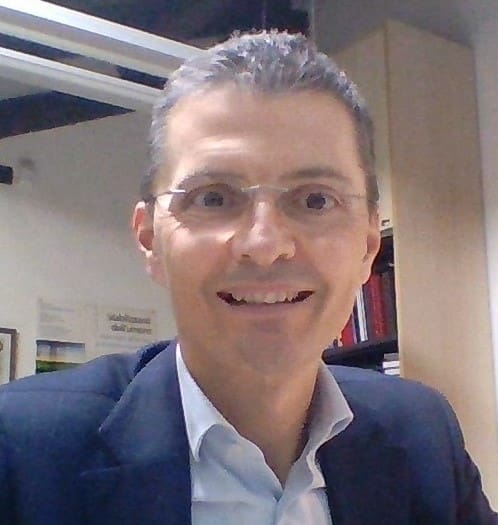
 +39 0458126418
+39 0458126418
